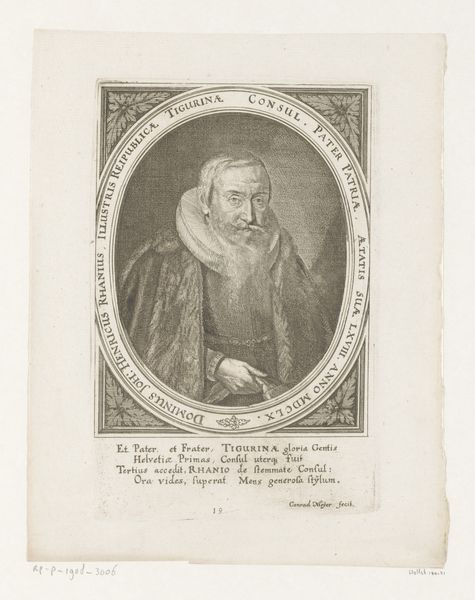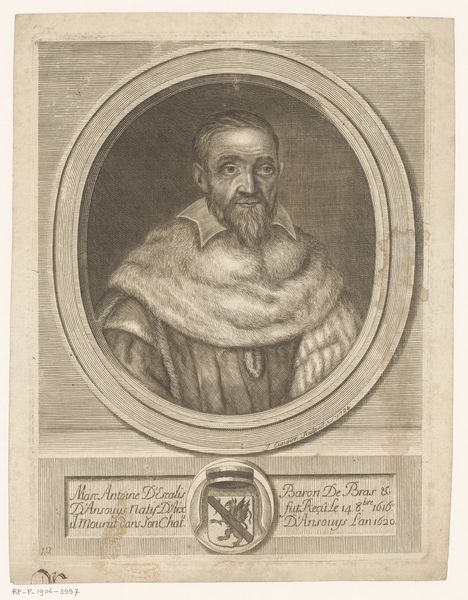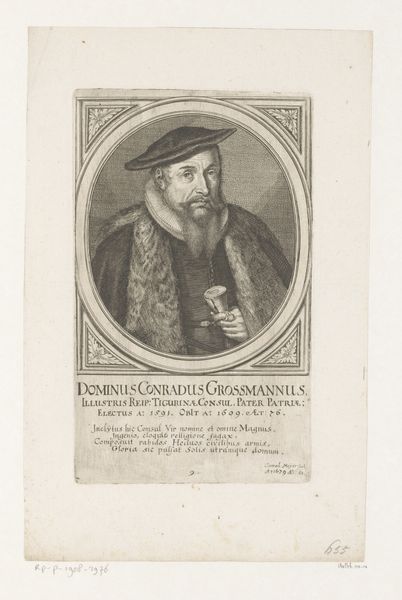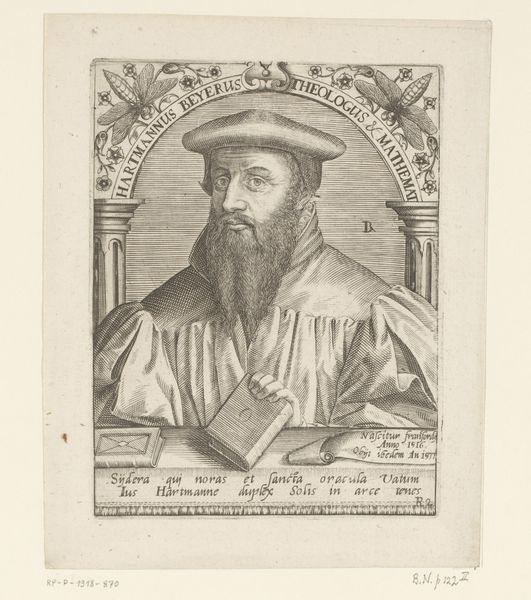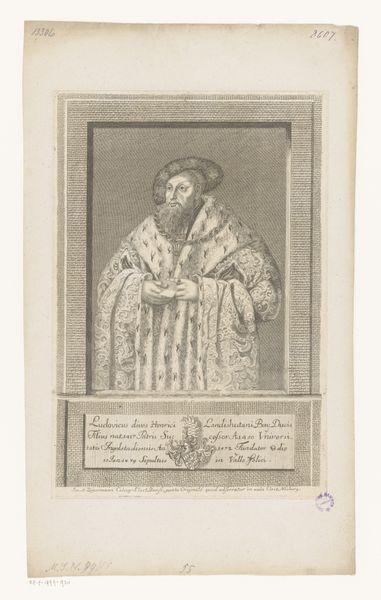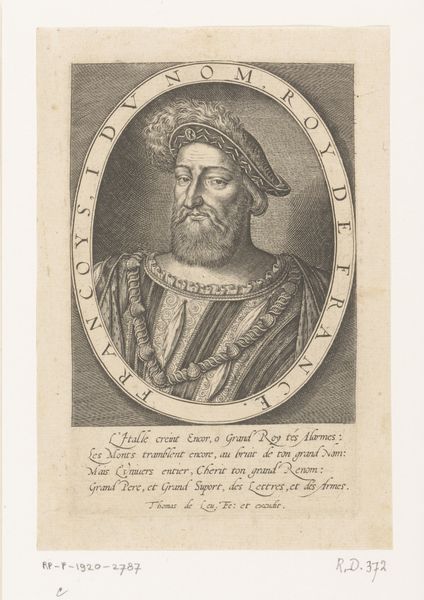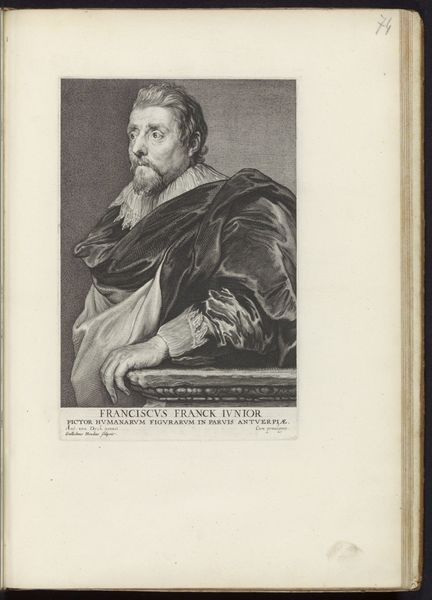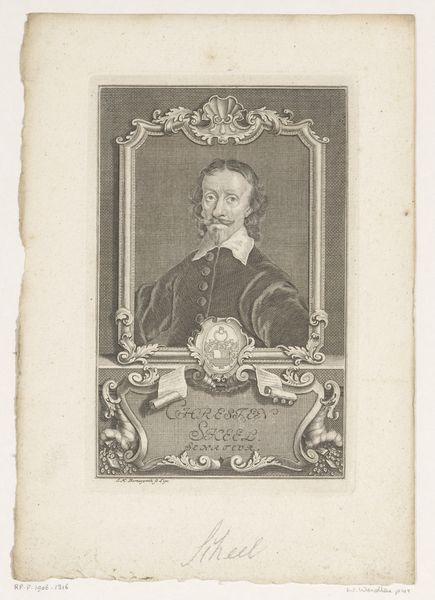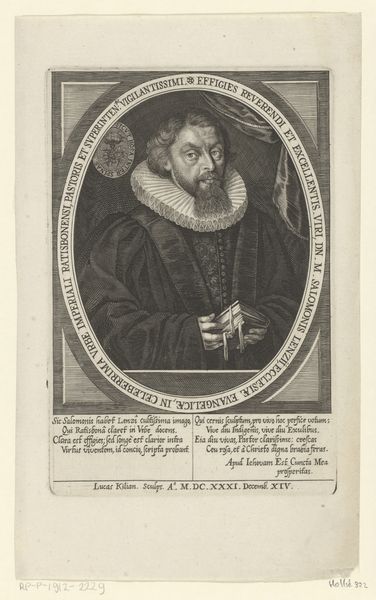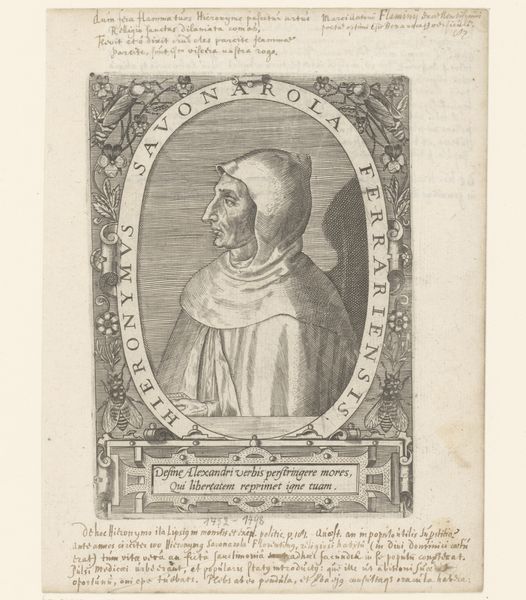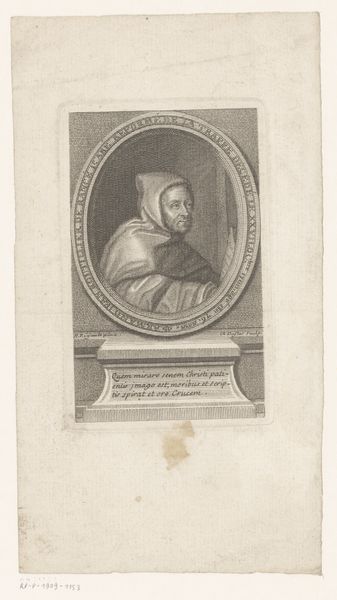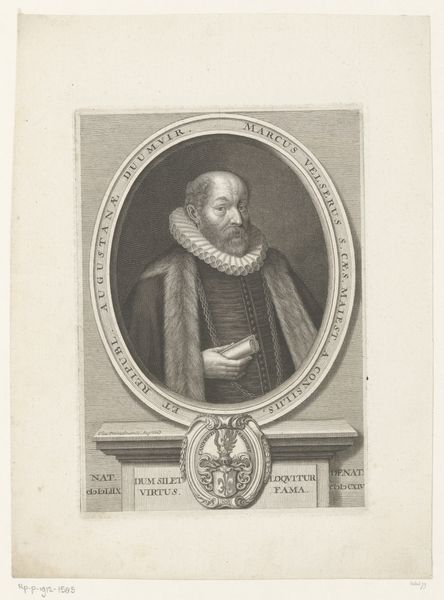
print, paper, engraving
#
portrait
# print
#
paper
#
11_renaissance
#
history-painting
#
engraving
Dimensions: height 273 mm, width 189 mm
Copyright: Rijks Museum: Open Domain
Curator: This is Joseph Anton Zimmermann’s 1773 engraving, "Portret van Christoph van Beieren," a somber portrait rendered on paper. Editor: My first impression is the palpable formality, that restricted range of values achieved through the engraving process lends it a detached feel, yet his gaze has an undeniable intensity. Curator: Precisely! Observe how Zimmermann utilizes line variation. Note the cross-hatching used to create the illusion of volume on Christoph’s robe in contrast to the clean, deliberate lines defining the architectural frame. This distinction establishes an immediate sense of depth. Editor: But what is it about the material reality here? The deliberate act of engraving—cutting lines into a metal plate—implies a specific socio-economic reality: time, skill, and patronage. Who was meant to consume such a readily reproducible image? It wasn't just about Christoph’s image. Curator: It certainly speaks to accessibility. As a print, the portrait could reach a wider audience than a unique painting might. This act of dissemination is intrinsic to its meaning, influencing perceptions. And what of its formal resemblance to, say, a vanitas motif? The memento mori. Editor: I would argue that we're discussing power and its performance. It speaks to a certain type of display and wealth afforded by this particular class in a time of shifting political and social dynamics. This extends to the engraver themselves, Zimmerman would have held significant cultural and practical skills. Curator: Of course, those skills are central. Consider the level of control Zimmermann exerted; those calculated lines speak volumes, literally shaping perception within prescribed parameters of visual form. It becomes about Zimmermann's agency too. Editor: True. By focusing on process, materials, and intended social function, this transforms how we read the very marks upon this paper. We move beyond representation. Curator: Agreed. Editor: It reminds us to acknowledge the labor, literally pressed onto paper, a history etched into the present.
Comments
No comments
Be the first to comment and join the conversation on the ultimate creative platform.
